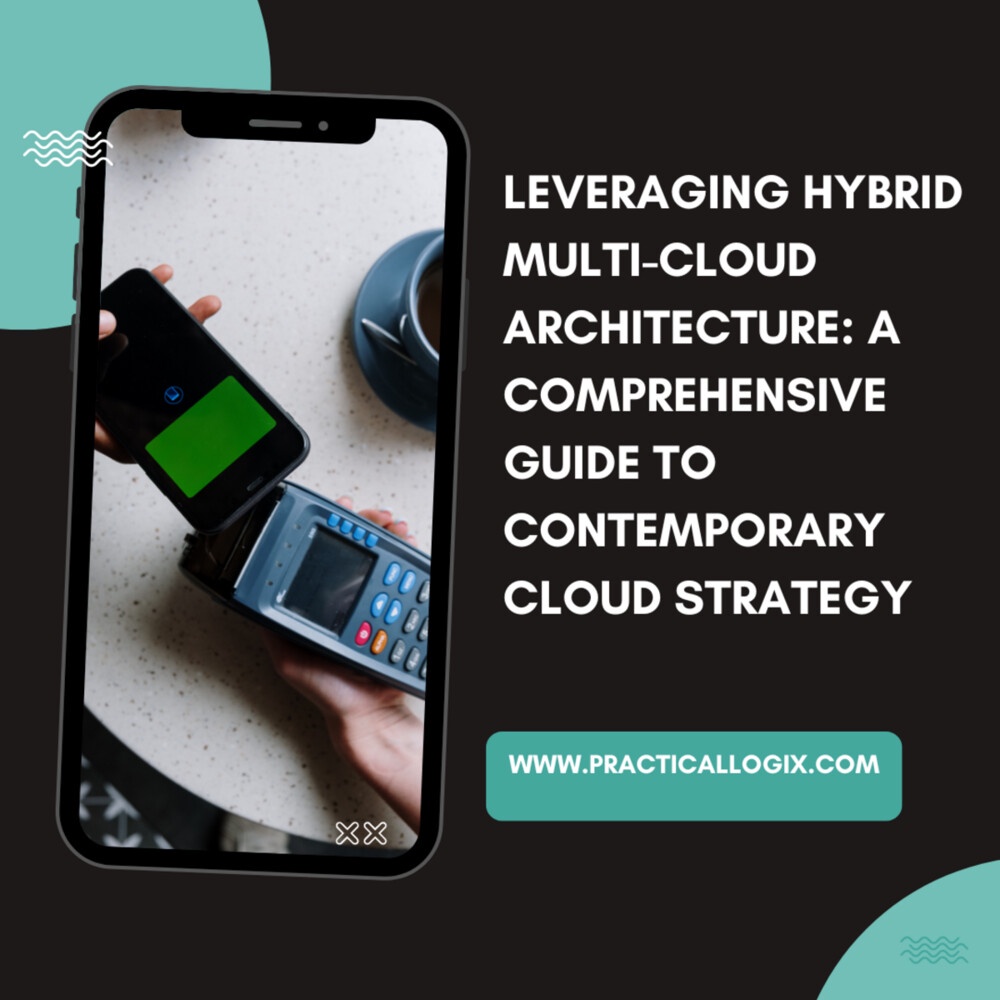In the current interconnected digital landscape, enterprises are progressively adopting cloud computing to enhance innovation, agility, and scalability. Hybrid multi-cloud architecture has arisen as a strategic methodology for organizations aiming to capitalize on the advantages of diverse cloud platforms, while mitigating risks and optimizing flexibility. This blog post aims to elucidate the concept of hybrid multi-cloud architecture, its essential components, and the profound influence it can wield on enterprises across the spectrum.
Exploring Hybrid Multi-Cloud Architecture
Hybrid multi cloud architecture encompasses the strategic utilization of multiple cloud computing services and deployment models, encompassing both public and private spheres, across various providers. Distinct from conventional single-cloud strategies that depend on one provider for all computing needs, hybrid multi-cloud approaches enable organizations to allocate workloads with consideration to cost-efficiency, performance optimization, and adherence to regulatory standards.
Critical elements of hybrid multi-cloud architecture comprise:
- Public Cloud: Services in the public cloud are extended by third-party vendors, offering access over the internet to various users. These platforms are renowned for their scalability, operational flexibility, and cost benefits, presenting an optimal solution for managing dynamic workloads and applications experiencing variable demands.
- Private Cloud: A private cloud setup is exclusively utilized by a singular entity, generally hosted internally or managed by an external service provider. This arrangement affords enhanced control, heightened security measures, and superior compliance capabilities, rendering it ideal for managing workloads of a sensitive nature or those subjected to stringent regulatory oversight.
- Multi-Cloud Management: The integration of multi-cloud management applications and platforms is pivotal for the efficient orchestration of workloads across diverse cloud environments. These solutions facilitate centralized management, offering comprehensive visibility, heightened control, and advanced automation capabilities. Consequently, they empower organizations to optimize their resource allocation, reduce expenditures, and refine operational processes.
Advantages of Hybrid Multi-Cloud Architecture
- Flexibility and Strategic Choice: Hybrid multi-cloud architecture affords organizations the flexibility to select the most suitable cloud services and deployment models for individual workloads, considering performance, cost-efficiency, and regulatory compliance. This strategic flexibility enables organizations to align their cloud strategy more precisely with specific business goals, allowing for adaptation to evolving requirements over time.
- Enhanced Resilience and Redundancy: Through the distribution of workloads across various cloud providers and geographical regions, hybrid multi-cloud architecture bolsters organizational resilience and redundancy. This approach significantly reduces the risk of operational downtime and data loss. In case of a service disruption or infrastructure failure, workloads can be smoothly transitioned to alternative cloud environments, ensuring uninterrupted operations and maintaining customer satisfaction.
- Dynamic Scalability and Optimal Performance: Hybrid multi-cloud architecture provides organizations with the capability to dynamically scale resources in response to fluctuating demand and performance needs. Utilizing the scalability and elasticity offered by public cloud services enables organizations to efficiently manage traffic surges, seasonal fluctuations, and rapid organizational growth without the need for excessive resource provisioning or incurring superfluous expenses.
- Cost Efficiency and Optimization: Through hybrid multi-cloud architecture, organizations can achieve cost optimization by choosing the most economical cloud services and deployment models for every workload. By utilizing financial mechanisms such as spot instances, reserved capacities, and consumption-based pricing models, organizations can reduce their cloud expenditure while enhancing value and maximizing return on investment.
Transformative Impact on Businesses
Hybrid multi-cloud architecture possesses the capability to profoundly transform business operations in several key areas:
- Agility and Innovation: Adopting a hybrid multi-cloud architecture enables organizations to expedite innovation and reduce time-to-market by utilizing cutting-edge cloud technologies and services from diverse providers.
- Competitive Advantage: Implementing a hybrid multi-cloud architecture affords organizations the opportunity to distinguish themselves from competitors through enhanced performance, reliability, and scalability, while also optimizing costs and mitigating risks.
- Regulatory Compliance: For organizations operating within regulated sectors, hybrid multi-cloud architecture offers the necessary flexibility to meet data sovereignty, privacy, and security mandates by allocating sensitive workloads to private clouds and utilizing public clouds for less critical tasks.
- Future-Proofing: Hybrid multi-cloud architecture equips businesses with the adaptability required to navigate evolving market dynamics, technological advancements, and shifting strategic objectives. By leveraging a varied ecosystem of cloud providers and services, organizations can remain agile, responsive, and resilient amidst ongoing uncertainty and disruption.
Conclusion
In conclusion, the adoption of hybrid multi-cloud architecture signifies a strategic methodology for enterprises aiming to fully exploit the capabilities of cloud computing, whilst enhancing flexibility, resilience, and economic efficiency. Through the strategic utilization of diverse cloud providers and deployment strategies, organizations are positioned to attain heightened agility, foster innovation, and secure a competitive edge within the ever-evolving digital ecosystem. As the corporate world progressively integrates hybrid multi-cloud architectures, the prospects for organizational transformation and expansion are boundless, revolutionizing the methodologies employed in the construction, deployment, and administration of cloud-based solutions in the contemporary digital era.


No comments yet